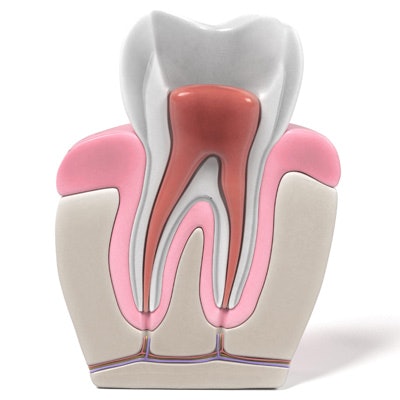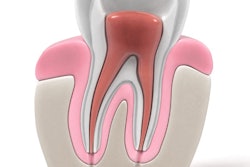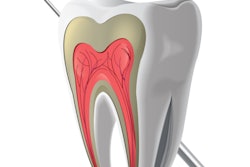
When using the WaveOne single-file system to shape a root canal, practitioners often create a glide path before canal preparation to improve performance. Researchers compared three popular systems used to create glide paths to see which performed best.
They found one system, the ProGlider, to be better in two key categories than the PathFile and the K-file. Their study was published in BMC Oral Health (August 29, 2018).
"Compared with the PathFiles and K-files, the ProGlider file combined with the WaveOne file showed reduced canal transportation and working time," wrote the authors, led by Linxia Zheng of the department of conservative dentistry and endodontics at the Nanjing Medical University School of Stomatology in Jiangsu, China.
Canal shaping
The WaveOne (Dentsply Sirona) is a reciprocating system used to shape the root canal completely from start to finish. The authors noted that this system has exhibited good bending and torsional resistance, but some previous investigators have called attention to two issues:
- Notable canal transportation in curved canals after WaveOne preparation
- More debris to the foramen, which negatively affects treatment prognosis
Apical extruded debris is associated with postoperative pain and inflammation, as well as persistent apical periodontitis. A glide path is defined as a smooth tunnel running from the canal orifice to the physiological apical foramen.
“Compared with the PathFiles and K-files, the ProGlider file combined with the WaveOne file showed reduced canal transportation and working time.”
Both the multiple-file PathFile and the single-file ProGlider are nickel-titanium systems, while the K-file is a stainless steel system. All three are by Dentsply Sirona.
For their study, the researchers measured canal transportation, canal volume increase, apical extruded debris, and working time in curved canals for three three systems. Canal transportation is defined as the removal of canal wall structure on the outside curve in the apical half of the canal due to the tendency of files to restore themselves to their original linear shape during canal preparation, according to the American Association of Endodontists' Glossary of Endodontic Terms.
They randomly assigned 60 mesial canals of extracted human mandibular first molars for glide path preparation into three groups for the K-file, PathFile, and ProGlider (n = 20 each). Each specimen was scanned three times using microcomputed tomography. The researchers measured the canal transportations at 1-, 3-, and 5-mm levels from the apical foramen. They also measured canal volume increases, collected apical extruded debris during preparation, and recorded working time.
They initially thought they would find no differences among the three groups. The ProGlider and PathFile groups, however, showed significantly less canal transportation than the K-file group at all levels (p < 0.05), and the ProGlider group exhibited a significantly larger canal volume increase than the other groups (p < 0.05) (see table below).
| Canal transportation and canal volume increase of 3 file groups after glide path preparation |
|||
| Glide path (mean ± standard deviation) | |||
| Transportation level | K-file | PathFile | ProGlider |
| 1 mm | 0.0280 ± 0.0041 mm | 0.0201 ± 0.0045 mm | 0.0181 ± 0.0036 mm |
| 3 mm | 0.0205 ± 0.0023 mm | 0.0164 ± 0.0031 mm | 0.0148 ± 0.0027 mm |
| 5 mm | 0.0117 ± 0.0033 mm | 0.0070 ± 0.0021 mm | 0.0056 ± 0.0022 mm |
| Volume increase | 0.4771 ± 0.0987 mm3 | 0.4467 ± 0.1187 mm3 | 0.5530 ± 0.0710 mm3 |
The researchers also reported on working time and apical extruded debris:
- The working time of the ProGlider group was the shortest, while that of the K-file group was the longest.
- The ProGlider and PathFile groups produced less apical extruded debris compared with the K-file group (p < 0.05).
Canal volume increases
The authors listed no study limitations and concluded that root canal volume increases did not differ significantly among the three groups after further WaveOne preparation.
"The results suggested that the subsequent WaveOne preparation eliminated the differences in canal volume increases caused by glide path preparation," they wrote.



















